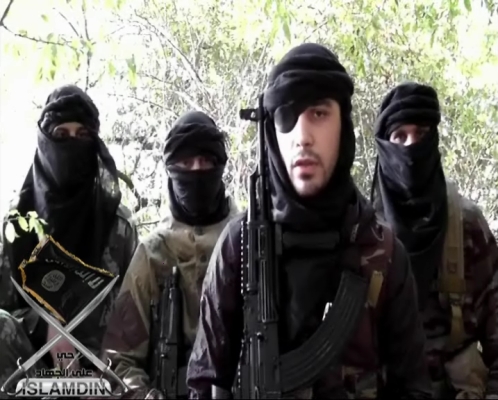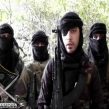
Rebel Attacks in Kabardino-Balkaria Skyrocket
Publication: Eurasia Daily Monitor Volume: 8 Issue: 25
By:

Amid reports by the Russian government that militant activity in Kabardino-Balkaria has increased four to five times (www.rosbalt.ru/2010/11/29/794929.html) –more than anywhere else in the North Caucasus region– local authorities are trying to belittle the role of rebel fighters against the backdrop of economic plans for the future development of the northwestern Caucasus republic.
It is hard to overlook the intensity of rebel actions given the killings of and bombings targeting police and Federal Security Service (FSB) officers as well as the assaults perpetrated against hunters in the foothills of Kabardino-Balkaria. In 2010, there were 108 attacks law enforcement personnel, including judges and prosecutors, in which 42 were killed. In addition, there were losses among the civilian population, with 31 people killed and 53 injured (https://news.mail.ru/inregions/caucasus/7/5216092/). All this happened against the backdrop of the arrest of two dozen militants of the underground armed resistance movement and the killing of the military and spiritual leader and one of the organizers of the Kabardino-Balkaria Jamaat, Anzor Astemirov (aka Emir Seifullah) in March 2010.
Therefore, it is not surprising that the president of Kabardino-Balkaria, Arsen Kanokov, who attended a board meeting of the local interior ministry on January 19, had to admit that the prognosis for the crime situation in the republic continued to be “disappointing” (www.regnum.ru/news/kavkaz/kab-balk/1365972.html). It thus appears that even the authorities are not expecting the crime situation to improve in 2011, despite the fact that they otherwise have an optimistic view of the future. Trying to somehow excuse himself for the fact that the insurgency is gaining momentum from year to year, Kanokov once again blamed militants from outside who are penetrating into his republic in order to destabilize the situation there.
But he seems to be exactly seven years late with his assessment. Today, the local jamaat in Kabardino-Balkaria does not require any outside help. On the contrary, this year we may be witnessing the strengthening of the role of jamaats in the northwestern Caucasus, specifically in Karachaevo-Cherkessia and Adygeya, and this will be a consequence of the activity of Yarmuk, the Kabardino-Balkaria Jamaat. Taking into account the performance of the local militant leaders and the number and quality of attacks they have perpetrated against the Russian authorities throughout Kabardino-Balkaria, it can be stated that they have succeeded in organizing jamaat structures virtually in all major towns that are capable of acting autonomously in case the Russian government takes action against the jamaat leadership.
The first thing that draws attention when you watch video clips made by representatives of the Kabardino-Balkaria Jamaat is their age. Almost none is older than 40, and there are many who are not even 30. That is, as in other parts of the North Caucasus, young people are the base of support of the ideology of resistance to Russian rule. It is difficult to calculate the exact number of the jamaat members, but official government figures themselves provide estimates. More than 20 people were arrested last year, while 52 people are wanted, including 10 militants wanted internationally through Interpol. Thus we can speak about hundreds of fighters, not counting those who informally support or are otherwise sympathetic to the insurgents’ plans in one village or another throughout Kabardino-Balkaria.
The killings of representatives of the Circassian national movement –including the high-profile murder of the famous ethnographer Aslan Tsipiev on December 29, 2010 by a group of militants commanded by Emir Zakaria– who are distancing themselves from the armed resistance, indicates that the insurgents do not seek sympathy from national organizations; they are no longer interested in their help. For the militants, the nationalist and official Muslim elites who do not support the Islamic ideology of the armed resistance movement have always been an easy target. The murder of the mufti of Kabardino-Balkaria, Anas Pshikhachev, on December 15, 2010 appears to be related to this trend. These killings were harshly condemned by public organizations, including those not associated with the Russian authorities.
The confrontation between the nationalist leaders and the armed resistance movement will ultimately result in a union between the nationalists and authorities against the militants. An alliance with the government would not be a step forward for the nationalists, who are already at risk of losing that element of young people which is not satisfied with calls for cultural unity and a return to spiritual values of the past –appeals that were relevant against the background of the collapsing Soviet Union, but are not necessarily valid during a period of local youths’ mass attraction to Islam in the region. The cause of the armed resistance movement is viewed in light of common Islamic values as well as a form of opposition to Russian interests in the North Caucasus.
The events of early 2011 confirm that the militants in Kabardino-Balkaria are not going to slow down the pace of their attacks against the Russian government and others they see as enemies. This category includes virtually anyone who does not share their point of view or who commit actions which, in their opinion, contradict the fundamentals of Islam.
For instance, a man named Amerbi Afaunov was killed near his house in the village of Kenzhi on January 3, 2011. He was known as a healer, but in the view of the militants he was a sorcerer and therefore an apostate. A day later, on January 4, the Sahara entertainment club in Kabardino-Balkaria’s capital city of Nalchik was blown up. According to the militants, the club was a hotbed of corruption in society. On January 13, a businessman, Safudin Khashukaev, was shot.
Like Nalchik, the Chegem district is one of the most dangerous places in Kabardino-Balkaria. The local jamaat there is commanded by Emir Zakaria (aka Ratmir Shameyev), who is also the Emir of the Southwestern Sector of the Villayat of Kabarda, Balkaria and Karachay –the name used by the Islamic rebels for this administrative unit of the Caucasus Emirate. On January 17, he ordered an armed attack in the Chegem area against the former interior minister of Kabardino-Balkaria, Khachim Shogenov, during which two personal guards of the latter were killed. Shogenov is accused by the rebels of brutal treatment of those captured during the fighting in Nalchik on October 13, 2005. And even after retirement, he remains a top target for elimination. On January 28, Michael Mambetov, the head of the Chegem district administration, was killed near his home (https://kabardino-balkaria.kavkaz-uzel.ru/articles/172027/). But the actions of the militants are not limited to just these areas. Thus, on the last day of January, Anatoly Sundukov, the police chief of Kabardino-Balkaria’s Urvan District, was wounded in a blast as he was trying to remove a “Caucasus Emirate” sign erected on the side of a road.
In conclusion, it should be noted that Emir Abdullah (aka Asker Dzhappuev), the new leader of the Kabardino-Balkaria Jamaat, has radically changed the tactics of his predecessor, and the rebels under his command will probably regularly strike in this part of the North Caucasus as the rebels intensify their activities.




